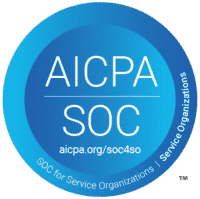Expertise
Make programmatic assessment a breeze!
Learn more about programmatic assessment, a form of holistic assessment, in combination with our e-portfolio Portflow and a Virtual Learning Environment (VLE) or Learning Management System (LMS).

Table of contents
Expertise page programmatic assessment
Introduction
At Drieam, we believe that taking responsibility for one’s own learning is an important condition for preparing for the rapidly changing future of which lifelong learning is an integral part. The best way to learn to take responsibility is by taking ownership of one’s own learning as much as possible. Our tool, a student-driven development portfolio called Portflow, is designed to increase ownership and foster agency among students by giving them insight into their own development.
Within higher education, there is an increasing interest in a more holistic approach to assessment, that closely matches Portflow’s vision: programmatic assessment. Programmatic assessment focuses on the student’s learning process. Tests are part of the learning process and are used to guide, stimulate, and provide insight into the student’s own progress (Peeters, 2019). On this page, you will learn more about Portflow, and how it can support programmatic assessment, a form of holistic assessment, when combined with a Virtual Learning Environment (VLE).
Programmatic assessment in Portflow and a VLE
Programmatic assessment does not follow a singular approach, as it is a concept rather than a prescriptive method. Thus, there is no step-by-step guide for implementing programmatic assessment (Baartman et al., 2020). Similarly, there is no one “right” way to use Portflow in the context of programmatic assessment. Multiple approaches exist for integrating programmatic assessment with tools like a digital portfolio and a VLE. To understand how Portflow in combination with a VLE can support programmatic assessment, it’s essential to first discuss the principles of programmatic assessment and the components of Portflow.
The principles of programmatic assessment

The principles of programmatic assessment (Baartman et al., 2020) are as follows:
1. Insight into student development occurs through a mix of different data points;
2. Each data point is feedback-oriented and has no fail/pass decision;
3. Learning outcomes are the backbone of the assessment program;
4. There is a constant dialogue about using feedback for self-direction;
5. The number of data points and the severity of the decision are proportionally related;
6. The severity of a decision guides the amount of assessor expertise required.
The components of Portflow
- Section: set of collections (year, semester, project, minor, subject)
- Collection: where learning takes place (course, module, project, internship)
- Goal: that which is learned toward (competency, learning objective, skill, learning outcome)
- Evidence: artefacts, reports, products, reflections (data points)
The integration of programmatic assessment in Portflow and the VLE
Below we illustrate how the various principles of programmatic assessment are supported by Portflow and the VLE.
A concrete example
Now that we have seen how Portflow can support programmatic assessment, we can further illustrate it in an example. As indicated earlier, programmatic assessment is not a strict set of steps, but rather a concept. So there are many different possibilities. This is just one of them:
Are you ready to get started with programmatic assessment in Portflow and a VLE?
Because we have linked the principles of programmatic assessment to the functionalities in Portflow, you have gained insight into the support that Portflow in combination with a VLE offers for programmatic assessment, a form of holistic assessment. Curious about how Portflow works in practice? Book a demo and discover what Portflow can do for your education.







